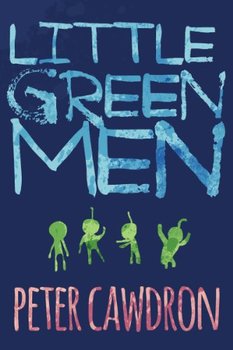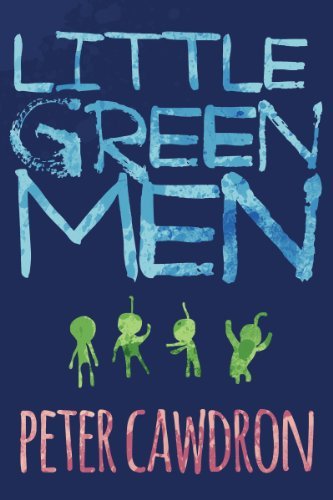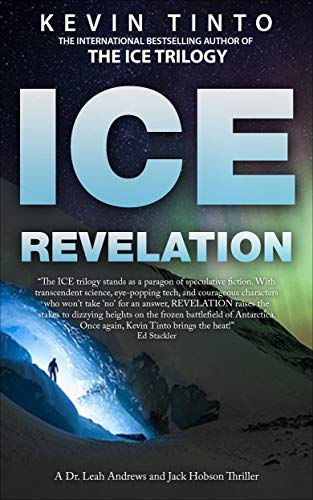
First Contact is one of the most abundant themes in all of science fiction. And one gifted author, Australian Peter Cawdron, has written nearly a dozen First Contact novels. But in Little Green Men he doesn’t take for granted what so many other writers consider a given—that communication between human and extraterrestrial intelligence is inevitable. And when First Contact finally arrives unexpectedly, he focuses not on the challenges of communication but on the depths of the human psyche that might well come into play.
The story in a nutshell
It’s the year 2241. Michaels and Johnson have ventured out onto the frozen wastes of an alien world to gather samples for analysis in a mining venture. They’re suddenly attacked by a horde of fast-moving creatures resembling Little Green Men. The creatures tear off one of Johnson’s arms and scuttle away, leaving him dying of blood loss in the sub-zero cold.
Little Green Men (First Contact #4) by Peter Cawdron (2013) 189 pages ★★★★☆
Is this communication between human and extraterrestrial intelligence?
Does this encounter represent First Contact? At first, Michaels isn’t inclined to believe that. “The Confederacy has searched over two hundred star systems, almost three thousand surveyed planets, and God knows how many moons, and there hasn’t been a shred of evidence for extraterrestrial life, but you think this muddy hellhole is different?” And those Little Green Men rushed past him and Johnson so blindingly fast that he has trouble persuading himself they were real.
Soon, two other members of the Dei Gratia‘s crew, a hundred kilometers away on another exploratory probe, encounter a “ghost ship,” a huge and unmistakably human starship that crashed two decades earlier. The site conjures up spooky references to the Mary Celeste, an American merchant ship found adrift and deserted off the Azores Islands in 1872—because the ship that discovered the Mary Celeste was named Dei Gratia! To compound the mystery, one of the miners accidentally loses his life inside the ghost ship . . . as a Little Green Man looks on. And this one looks unmistakably real.
Back on board the Dei Gratia, Michaels, the science officer, and Captain Vegas struggle with their own fears as well as those of their shipmates, all desperate to understand what happened on the planet’s surface. Then Little Green Men materialize inside the Dei Gratia itself—and all hell breaks loose. The last thing on anyone’s mind is communication between human and extraterrestrial intelligence.
Is contact with extraterrestrial intelligence likely?
It’s worthwhile exploring, as Cawdron does, whether First Contact is in fact a reasonable expectation. Like other writers, he cites the 1961 Drake Equation, an effort to stimulate the Search for Extraterrestrial Intelligence. Frank Drake (1930-) himself calculated there were probably between 1,000 and 100,000,000 planets with civilizations in the Milky Way galaxy. But Cawdron appears to side with the critics of the thesis. As some have shown, by plugging different assumptions into the equation we could easily end up concluding that humanity is probably alone in this galaxy, and possibly in all the observable universe. SETI‘s failure to date to detect extraterrestrial civilization—and the absence of proof that any of the numberless reports of “UFOs” have brought aliens to Earth—suggest that skepticism is more than reasonable.
For further reading
This is one of the novels in Peter Cawdron’s insightful First Contact book series.
Check out 23 engaging First Contact novels reviewed here. The list includes several others by Peter Cawdron.
For more good reading, check out:
- The ultimate guide to the all-time best science fiction novels;
- Great sci-fi novels reviewed: my top 10 (plus 100 runners-up);
- Six new science fiction authors worth reading; and
- The top 10 dystopian novels reviewed here (plus dozens of others).
And you can always find my most popular reviews, and the most recent ones, plus a guide to this whole site, on the Home Page.


























